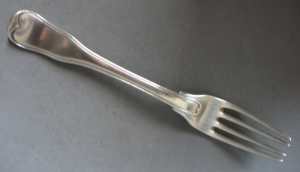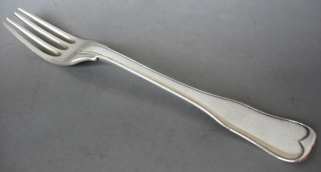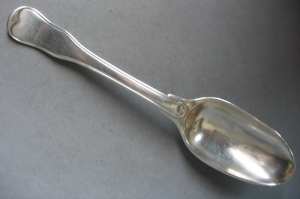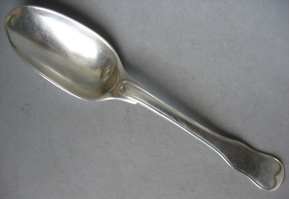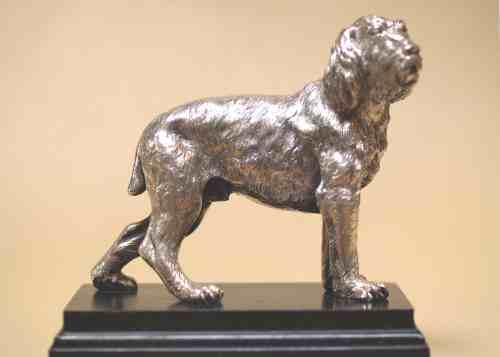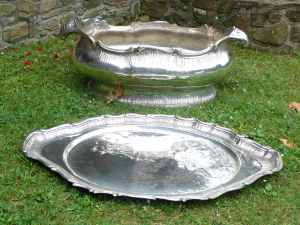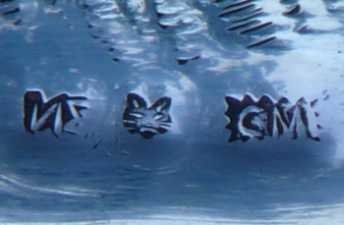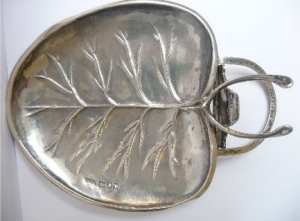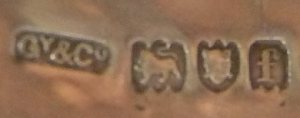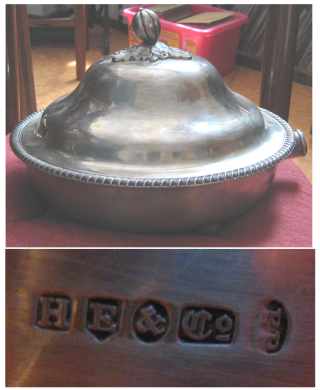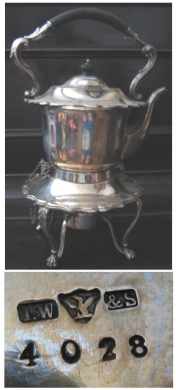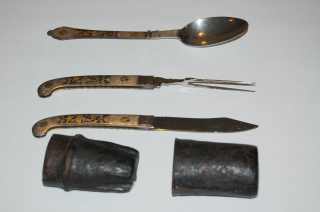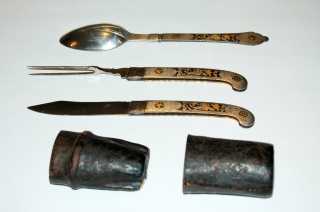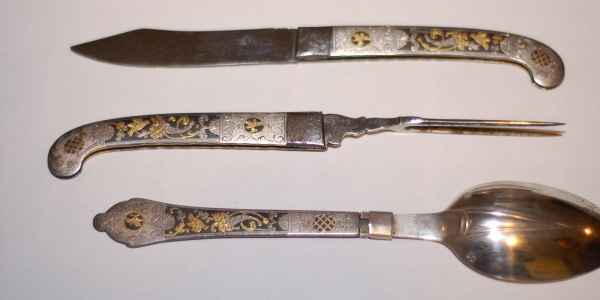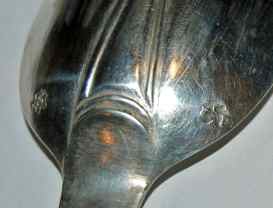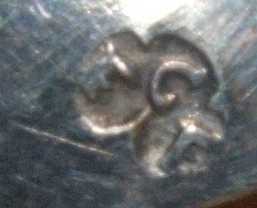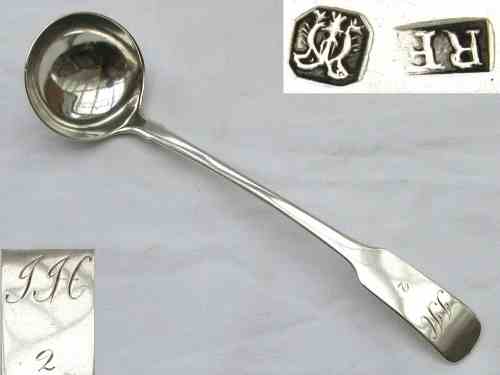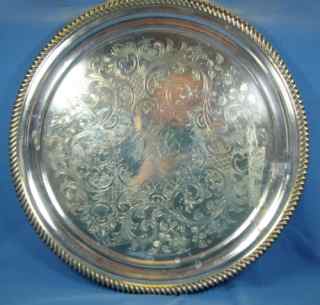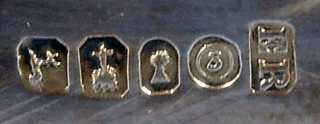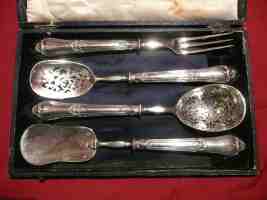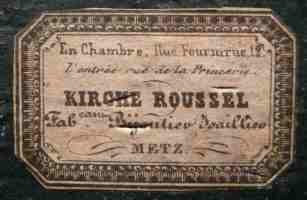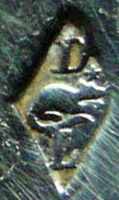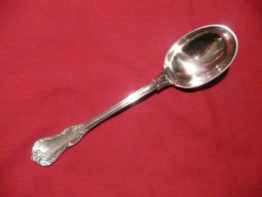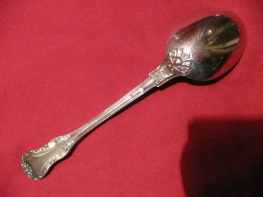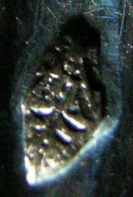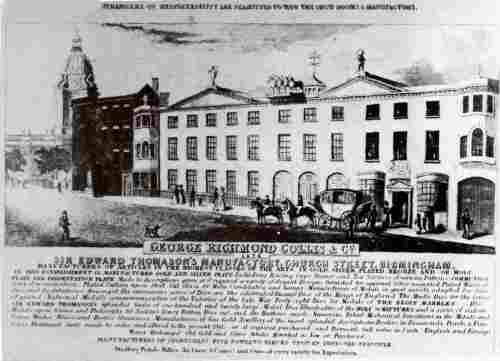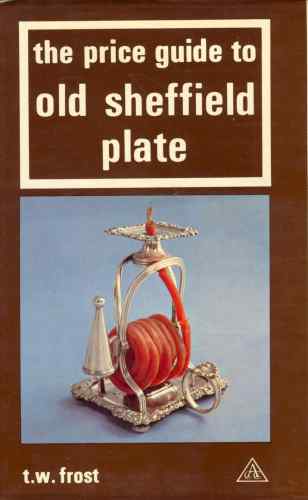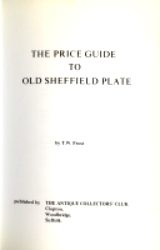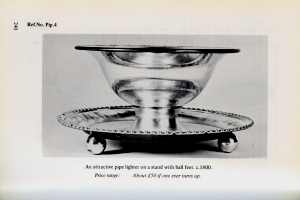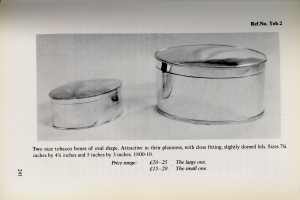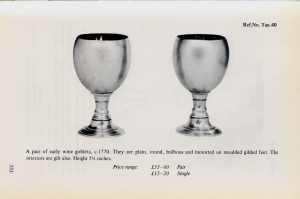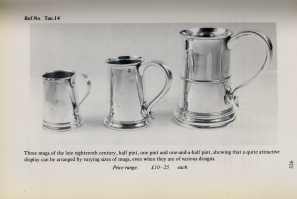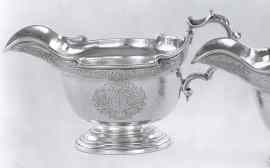 newsletter # 63 AUGUST 2009
newsletter # 63 AUGUST 2009www.ASCASonline.org SITE MAP
email: silverassociation@yahoo.it
YOUR GUIDE TO AUGUST NEWSLETTER:
articles new members
members' window
|
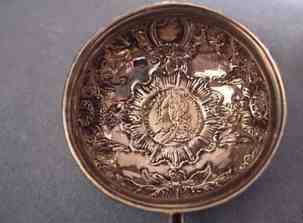
Richard Hyman presents:
click here
|
New members
Welcome to new ASCAS members:
Peter Barnes - Canada
Ashok Jain - India
Stefaan Lootens - Belgium
Eddie Robinson - Australia
Michael Shatkin - USA
Kremena Ivanova Vassileva - Dubai - UAE
|
top page -
page map |
Members' Window # 63/1
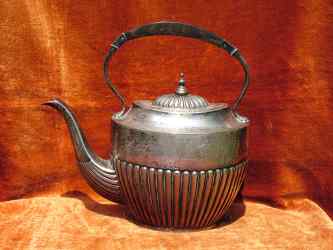
Prof. David N. Nikogosyan presents his sixth work about
|
Members' Window # 63/2
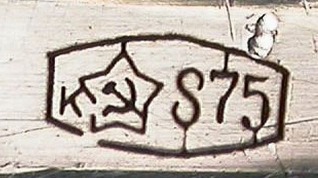
Dov Wulich presents
|
Mail to ASCAS: e-mail silverassociation@yahoo.it
Claudio Degliesposti writes:
...I'm trying to identify a set of 5 forks and 5 spoons made in
sterling silver that I have owned for many years and that were bought
as XIX century high grade Italian silver.
The marks are similar, but with different initials, to the mark
of Giuseppe Vernoni, assayer (see November 2008 Newsletter).
The set seems to me very interesting for its shape, simple yet
so elegant, and its considerable weight (each spoon 80 grams /
fork 70 grams).
I will be very happy to know more...
Claudio Degliesposti
In my opinion the mark GBC with crown and cross inside a
shield is the mark of silversmith Gerolamo Curione, Asti,
...1782-1808.... The mark (not illustrated with an image) in
Donaver-Dabbene book is described as "una corona sopra G.B.C. (a
crown over G.B.C.)".
The mark BC inside a beaded contour belongs (possibly) to the
same silversmith (Gerolamo Curione) active in 1803 as assayer at
Asti Assay Office.
Further information about Kingdom of Sardinia (Piedmont) marks
are available in my private website at
http://www.silvercollection.it/TORINOHALLMARKS.html
Giorgio Busetto
Ludo D'Haese writes:
I need your help in identifying the mark of this Italian
silversmith. Any halp will be greatly appreciated.
Bien à vous
Ludo D’Haese
The maker is F.lli Magrino, Argentieri in Firenze, di
Goffredo ed Alessandro Magrino s.n.c.
Via Boccaccio 16-18, GRASSINA (FI)
Giorgio Busetto
José Luis Muñoz writes:
I have no idea about the mysterious mark in this bowl and plate.
Your suggestion will be welcome.
Recibe mi mas coordial saludo
José Luis Muñoz
Susan Pfau writes:
I wonder if you can tell me where to send these pictures for
identification?
The wishbone is hinged. The "heart" measures 4-1/4" x 3-1/4".
I'm bewildered. Thanks so much for any light you can shed.
Susan Pfau
The maker of your item is GREY & Co, Gold & Silver
workers. This mark was entered at London Assay Office by Sidney
Oldridge, 13th September 1900.
The firm was founded by William Grey in 1876 and from 1886 to
1936 was active under the style of Grey & Co.
Grey & Co was noted for their novelties in silver and supplied
retail establishments such as Asprey & Co (London) and P. Orr &
Sons (Madras, Rangoon & Calcutta).
Giorgio Busetto
Carlo Bboy writes:
I'd wish to know the makers of these items. Thanks in advance
Carlo
The maker of the covered bowl is HAWKSWORTH, EYRE & CO,
while the maker of the kettle is THOMAS WILKINSON & SONS.
Further information about these makers are available in my
website at
http://www.silvercollection.it/electroplatesilverH.html and
at
http://www.silvercollection.it/electroplatesilverWZ.html
Giorgio Busetto
Michael Shatkin writes:
I'm looking for something about this travel set. I send some
pictures hoping to find more about its origin and maker
Michael Shatkin
Any information will be greatly appreciated
Giorgio Busetto
John J. Yale writes:
I'd be grateful if you could cast your eye over the attached
picture. It's a fiddle pattern ladle - 6 1/8" long x 1 1/2"
across the bowl. I expected to find it's hallmarks to be
Scottish from the design and size of the ladle but I don't
recognise the maker or the dragon type symbol?
Thanks
John J. Yale
The "dragon" mark has some resemblance with the "eagle"
used in Perth
(see at
http://www.silvercollection.it/SCOTTISHSILVERSMITHSPERTH.html)
but, anyway, I'm not sure and unable to identify the maker.
I hope that ASCAS readers will be able to reply to your
question.
Giorgio Busetto
Bette G. Bell writes:
I am trying to find the maker of an English silverplated tray,
and have spent several hours trying to track it down, using my
library (moderately large) and the Internet. I have attached a
photo of the mark and the tray. It is nothing spectacular, but I
just hate not to find what I am looking for.
Any thoughts, ideas or direction will be greatly appreciated.
Thanks
Bette G. Bell
Suggestions are needed
Giorgio Busetto
Replies to questions
Alessandro Colemann receives this reply about his French
flatware
(see July 2009 Newsletter)
Charles C. Cage writes:
The mark on Alessandro Colemann’s French sweetmeat set (DL +
a rat and star) is that of Alexis-Désiré Lerat, 44 rue
Sainte-Avoye, Paris. It was registered on 11 Mar 1842 and
cancelled 8 Nov 1843.
The mark on his spoon (NPB + a wallflower with five leaves) is
that of Nicolaus-Pierre Béguin, 6 place Dauphine, Paris. His
first mark was registered 26 May 1840 and cancelled 11 Feb 1847,
with an identical second mark registered 3 May 1847. There is no
record of cancellation of this second mark, but he is thought
not to have worked much past 1847. He was certainly no longer
working by August 1855, when his shop was occupied by
silversmith Hippolyte Thomas.
Charles C. Cage
Dominique Bochet receives these replies about his silver
spoons
(see July 2009 Newsletter)
Charles C. Cage writes:
Dominique Bochet's spoons are Belgian. The '85' mark
represents the year 1785, and it is flanked by the marks for
Brussels: a crowned lion and the head of St. Michael. The
leftmost mark is the maker's mark (an eye), and is attributed to
Theodorus Smeesters (Master 1758).
Charles C. Cage
Hugo Keymeulen writes:
This is a good Belgian spoon from Brussels. The marks from
the left:
An eye is from the well-known master Theodorus Smeesters,
master from 29/05/1758,dean from 1766-1767 until 1771-1772
Then the crowned climbing lion mark is the city mark for Brussel (Brussels)
XVIII
85 for he year 1785
The head with the cross is known as 'Sint Michiels', patron
saint Brussel (Brussels)
Hugo Keymeulen
Philippe d'Arschot writes:
The answer is:
Marks of Brussels, (Belgium), 1785, master Theodorus Smeesters.
Philippe d'Arschot
André Van den Kerkhove writes:
I can inform that the spoon was made in Brussels.
Marks: master mark, angel Michael (city mark), 17(85) (year) and
lion rampant (citymark).
If interested in the maker I need a good photograph to
identify him
André Van den Kerkhove
David Mckinley has a deep interest on silver mote spoons,
their manufacture, shape, marking and possible use. A long
article written by David about this subject matter will be
published in one of our next newsletters.
Herewith what he writes about his experiments on mote spoon's
use
Giorgio Busetto
MOTE SPOON: AN UNRESOLVED DILEMMA
I am glad that Malcolm Rice (see
July Newsletter) found my article on fake mote spoons
interesting and to answer his question about what sort of tea I
used in my experiments I have repeated them although when I
first carried out these experiments I purposely bought large
leaf tea which allowed only quite small tea dust specks into the
cup. This time the largest leaf I found in our kitchen was
Lapsang Souchong. I used three mote spoons in this experiment;
an early one with simple holes in the bowl, a mid 18th century
one with scroll-work piercing and a later one with crosslets.
I was prompted to carry out these experiments because of the use
of the word ‘mote’ (which means small speck) in renaming this
spoon in the 19th century.
None of my spoons would remove what I would describe as a small
speck. The early one with simple holes removed larger debris as
did the later one with crosslets. The mid century one with open
scroll-work removed only stick-like pieces of debris but allowed
through anything more compact unless quite large.
In conclusion I have to admit that there is still considerable
debate about what these spoons were used for and I could be
proved quite wrong in my assumptions. I would be interested to
hear the views of other members.
David Mckinley
"A PAGE per MONTH"
In this column we present a page
obtained from makers' brochures, books, auction catalogs,
advertising or whatever other printed paper, related to silver,
that may be of interest for ASCAS members.
The images will be published at a "low resolution" level and for
private and personal use only
"A WORD per MONTH"
In this column we present an abstract
from a page of the "What is? Silver Dictionary"
courtesy of
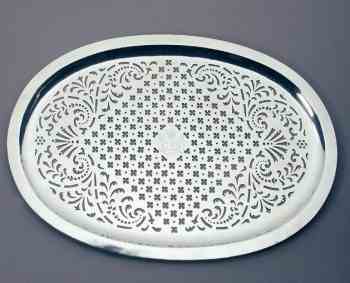
|
MAZARINEA mazarine is an oval pierced plate plate placed on top of a bowl and
is used in serving the fish. These drainers range in
lenght from about 30 to 60 cm.
|
"A BOOK ON MY SHELF"
In this column we present books, new
or ancient, dealing with silver in all its aspects (history,
marks, oddities...). This isn't a "book review" but only a fair
presentation of some useful "tools" that anyone may have in the
shelf of his bookcase.
ASCAS members are invited to contribute to this column
(click to enlarge images)
The "book on my shelf" of this month presents:
THE PRICE GUIDE
TO
OLD SHEFFIELDPLATE
by F.H. Frost
The Antique Collectors Club
Clopton, Woodbridge, Suffolk, 1971
TO
OLD SHEFFIELDPLATE
by F.H. Frost
The Antique Collectors Club
Clopton, Woodbridge, Suffolk, 1971
"A CREST per MONTH"
In this column we present images and description of Crests and Mottoes of British, Irish and Scottish Families as engraved in silver items.
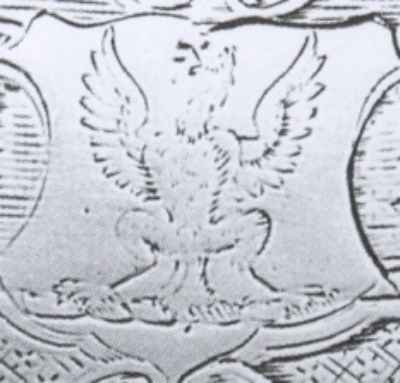
|
ROFEY or ROFYthe crest is an eagle, displayed
|
Closing our AUGUST 2009 edition of ASCAS Newsletter I hope you have appreciated its content.
Your comments, suggestions and advice will be of great help.
My thanks to Carlo Bboy, Bette G. Bell, Charles C. Cage, Philippe d'Arschot, Ludo D'Haese, Claudio Degliesposti, Jayne Dye, Richard Hyman, Hugo Keymeulen, David Mckinley, José Luis Muñoz, David N. Nikogosyan, Susan Pfau, Michael Shatkin, André Van den Kerkhove, Dov Wulich, John J. Yale, for their invaluable contributions.
Giorgio Busetto
Secretary
ASCAS is a community of people having a common
interest in antique silver.
|

